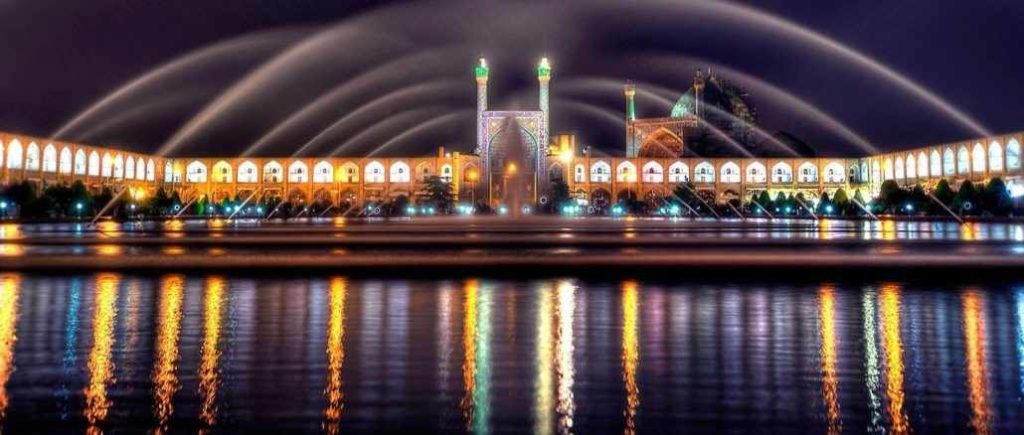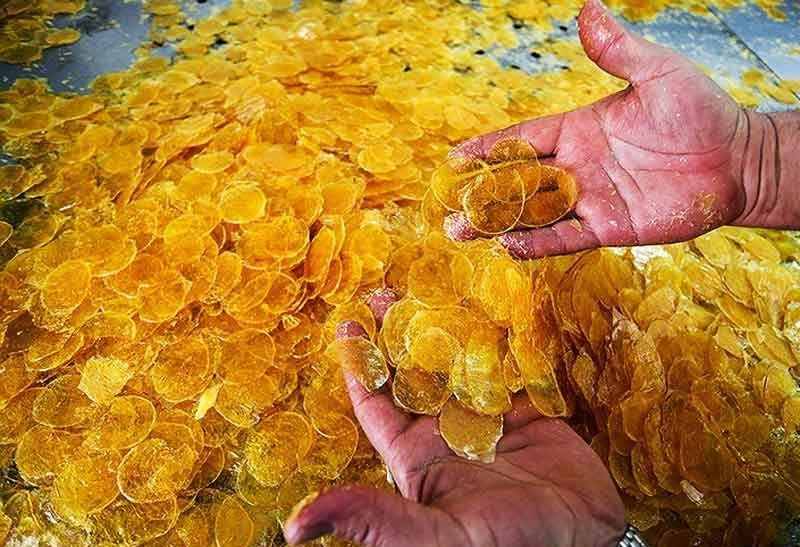Join sepanja.com for travel to Esfahan another amazing city of our Iranian tour.
Esfahan is a city with arid climate located in the lush plain of the Zayanderud River at the foothills of the Zagros mountain range.
Esfahan is the third most populous city in Iran right after Tehran, and Mashhad.
Esfahan carries tremendous history of at list four dynasties.
Isfahan regained its importance during the Safavid period (1501–1736).
The city’s golden age began in 1598 when the Safavid ruler Shah Abbas I (reigned 1588–1629) made it his capital and rebuilt it into one of the largest and most beautiful cities in the 17th century world.
In 1598 Shah Abbas the Great moved his capital from Qazvin to the more central Isfahan.
This new status ushered in a golden age for the city, with architecture and Persian culture flourishing.
In the 16th and 17th centuries, thousands of deportees and migrants from the Caucasus, that Abbas and other Safavid rulers had permitted to emigrate en masse, settled in the city.
It is famous for its Perso–Islamic architecture, grand boulevards, covered bridges, palaces, tiled mosques, and minarets.
Esfahan also has many historical buildings, monuments, paintings and artefacts.
The fame of Isfahan led to the Persian pun and proverb “Esfahān nesf-e- jahān ast”: Isfahan is half (of) the world.
Climate
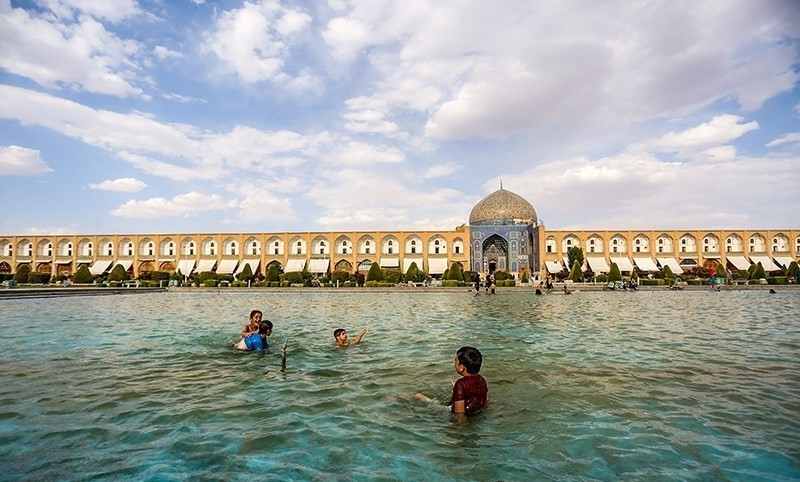
Despite its altitude, Isfahan remains hot during the summer, with maxima typically around 35 °C (95 °F).
However, with low humidity and moderate temperatures at night, the climate is quite pleasant.
During the winter, days are mild while nights can be very cold.
Snow has occurred at least once every winter except 1986/1987 and 1989/1990.
The Zayande River starts in the Zagros Mountains, flowing from the west through the heart of the city, then dissipates in the Gavkhooni wetland.
Best time to visit Esfahan
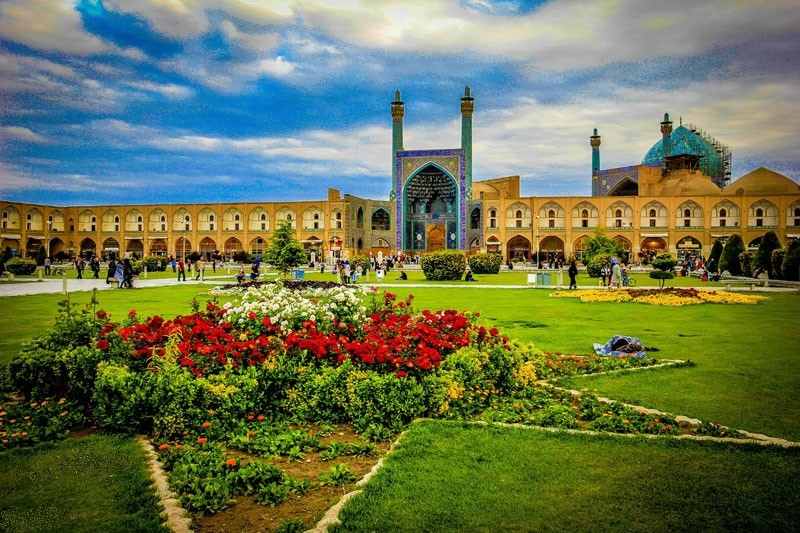
Spring and autumn are the best time to travel to Esfahan, but winter present the greatest bargains for those price conscience travelers.
As whole it is easy to say that each season offers it own advantage and uniqueness.
Esfahan is a large city with many tourist attractions area.
For your comfort, and easy access, saving time and money, sepanja.com can be a great source to book your accommodations from a suite, apartment, house, villa, or even a great mansion.
If you decide to travel to other part of Iran sepanja can assist you with renting an ideal suite, apartment, house or any residential needs you desire.
Historical places to visit while you staying in Esfahan.
Naqsh-e Jahan Square
Maidān-e Naqsh-e Jahān; Trans: “Image of the World Square”), also known as Meidan Emam, is a square situated at the center of Isfahan, Iran.
Constructed between 1598 and 1629, it is now an important historical site, and one of UNESCO’s World Heritage Sites.
It is 160 meters (520 ft) wide by 560 meters (1,840 ft) long (an area of 89,600 square meters (964,000 sq ft)).
It is also referred to as Shah Square or Imam Square.
The square is surrounded by buildings from the Safavid era.
The Shah Mosque is situated on the south side of this square.
On the west side is the Ali Qapu Palace. Sheikh Lotf Allah Mosque is
Situated on the eastern side of this square and at the northern side Qeysarie Gate opens into the Isfahan Grand Bazaar.
Today, Namaaz-e Jom’eh (the Muslim Friday prayer) is held in the Shah Mosque.
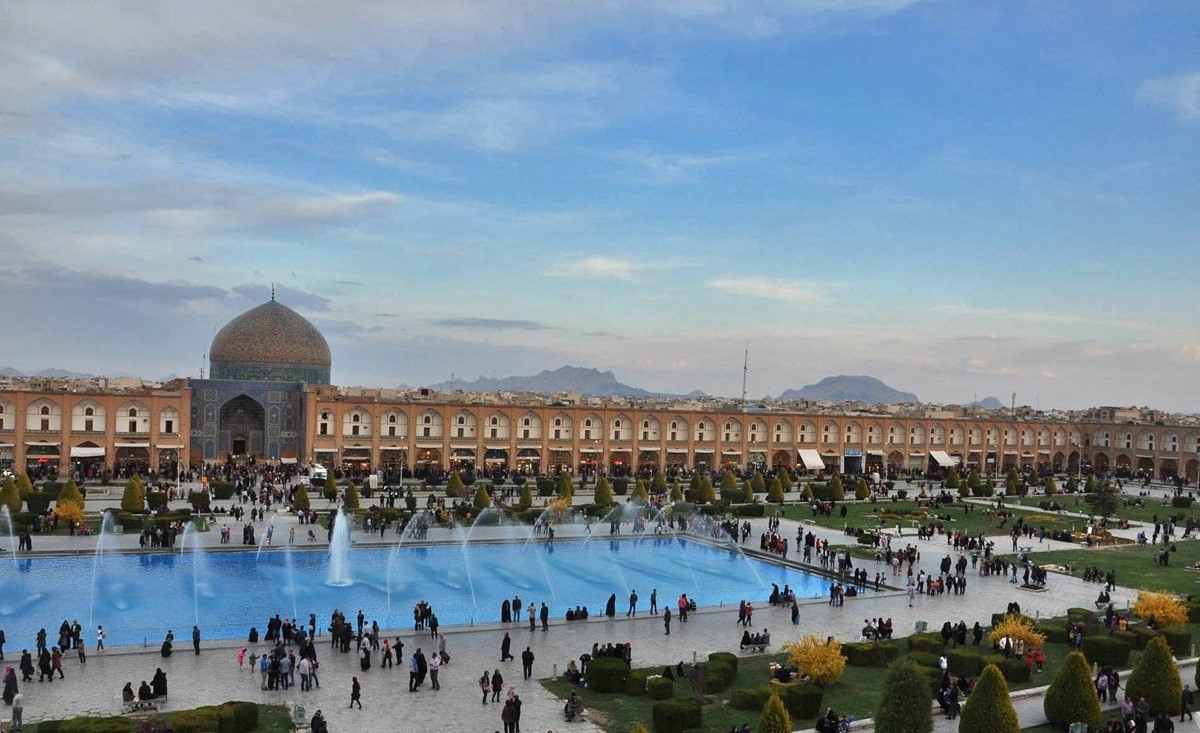
Shah Mosque
The Shah Mosque also known as New Abbasi Mosque (Masjed-e Jadid-e Abbasi), Royal Mosque, or Imam Mosque after the Iranian Revolution, is a mosque in Isfahan, Iran, standing in south side of Naghsh-e Jahan Square.
It was built during the Safavid dynasty, ordered by Abbas I.
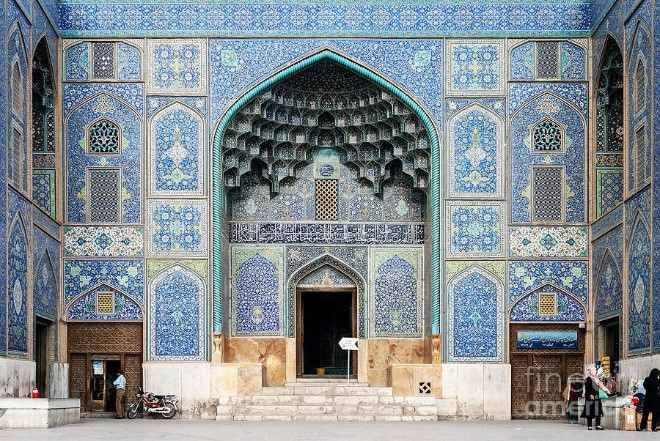
Sheikh Lotfollah
Sheikh Lotfollah Mosque is one of the architectural masterpieces of Iranian architecture that was built during the Safavid Empire, standing on the eastern side of Naqsh-i Jahan Square, Esfahan, Iran.
Construction of the mosque started in 1603 and was finished in 1619.
It was built by the chief architect Shaykh Bahai, during the reign of Shah Abbas I of Persia.
On the advice of Arthur Upham Pope, Reza Shah Pahlavi had the mosque rebuilt and repaired in the 1920s.
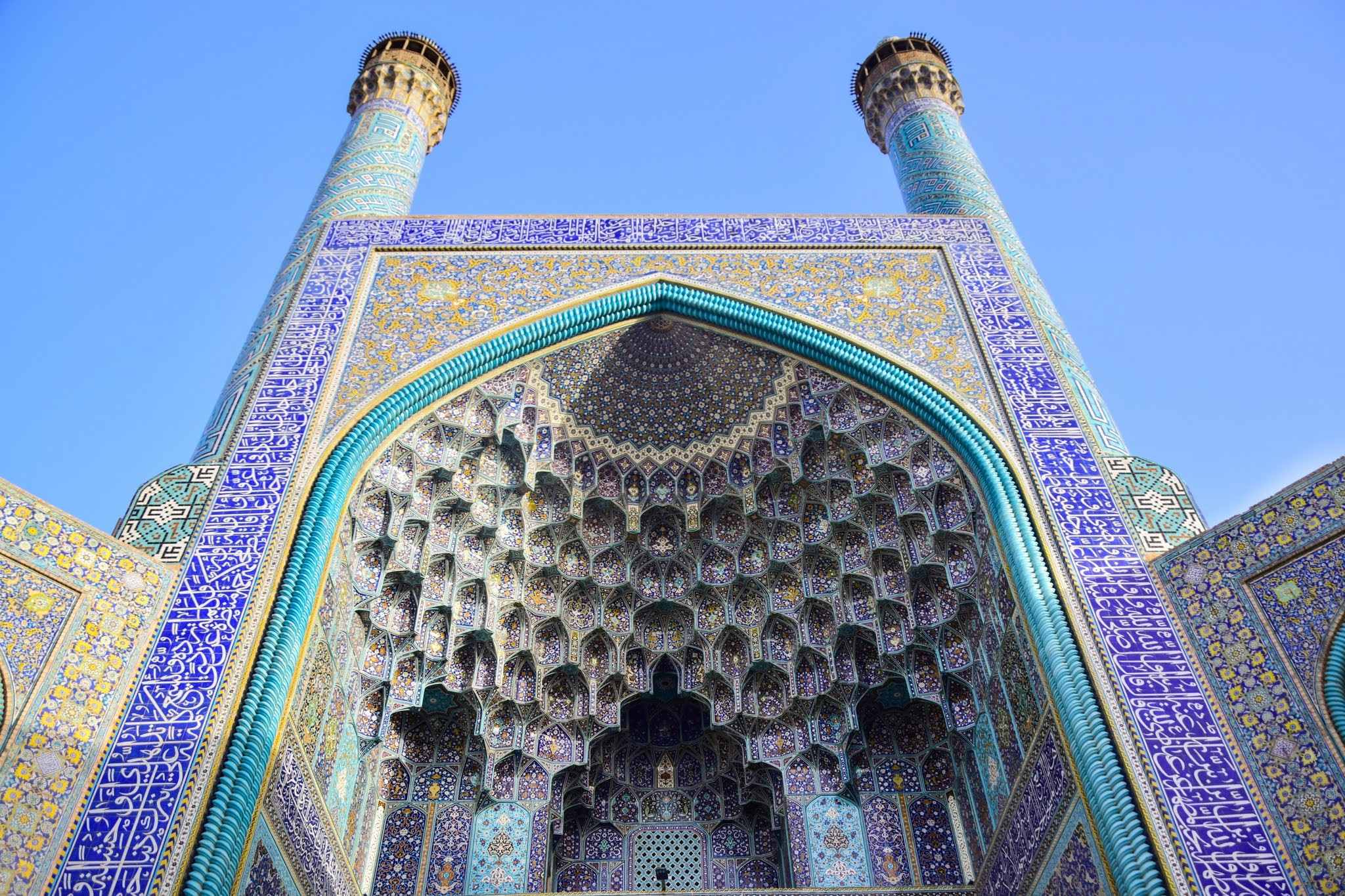
Qeysarie gate
The Qeysarie gate is a historical gate in the main entrance of the Bazaar of Isfahan and Qeysarie Bazaar in Isfahan, Iran.
The gate had had originally 3 floors, but the third floor was destroyed later.
The destroyed third floor had been a Naqqarekhane.
The gate was built in the 17th century during the Safavid era.
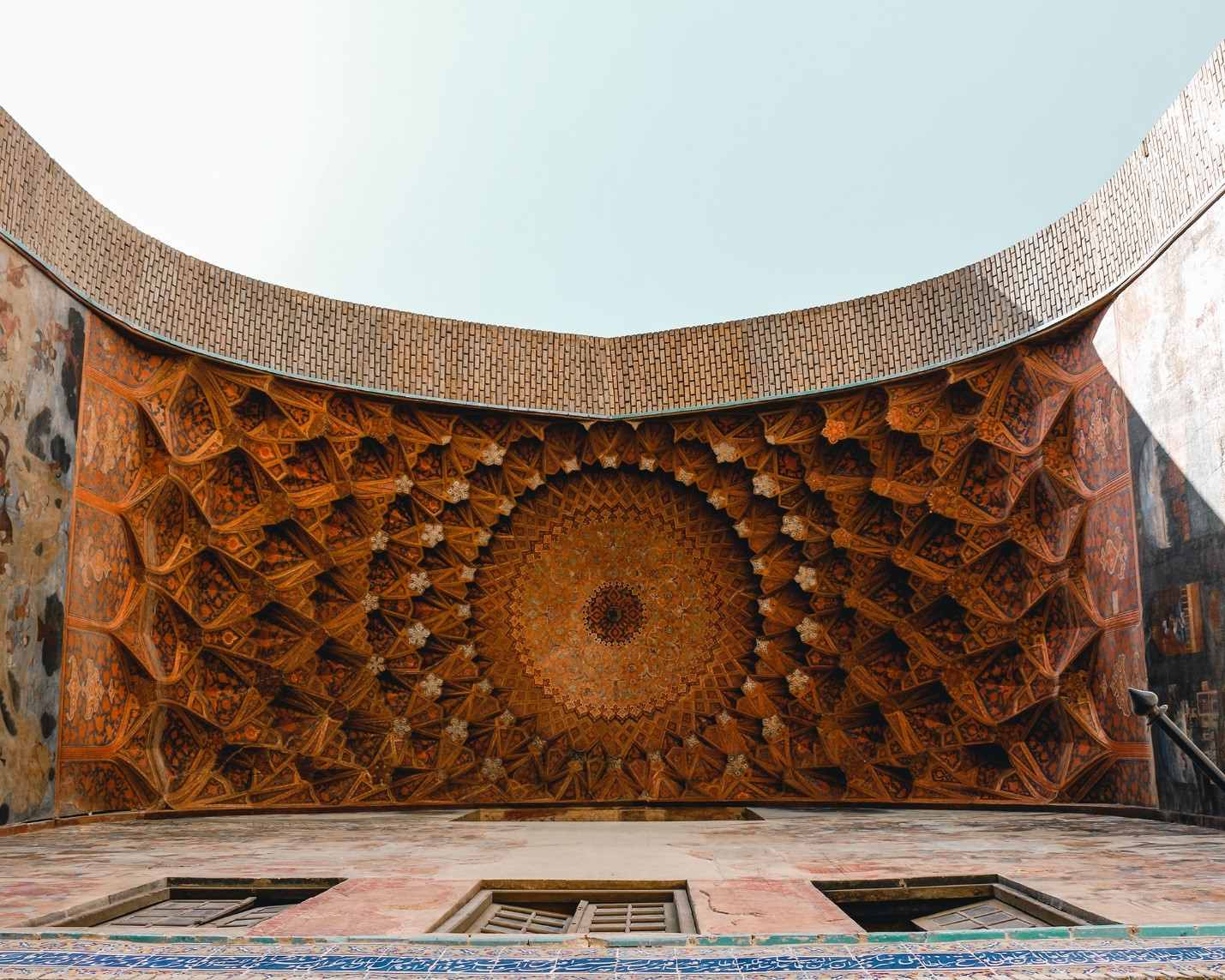
Ali Qapu
Ali Qapu (Persian: is a grand palace in Isfahan, Iran.
It is located on the western side of the Naqsh e Jahan Square, opposite to Sheikh Lotfollah Mosque, and had been originally designed as a vast portal.
It is forty-eight meters high and there are six floors, each accessible by a difficult spiral staircase.
In the sixth floor, Music Hall, deep circular niches are found in the walls, having not only aesthetic value, but also acoustic.
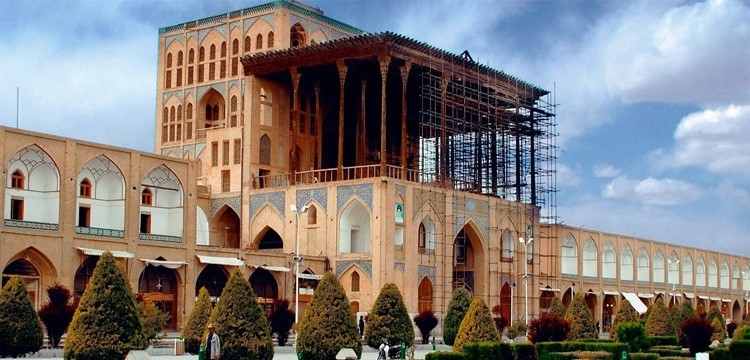
Chehel Sotoun
Chehel Sotoun (also Chihil Sutun or Chehel Sotoon; Persian:
(“Forty Columns”) is a pavilion in the middle of a park at the far end of a long pool, in Isfahan, Iran, built by Shah Abbas II to be used for his entertainment and receptions.
In this palace, Shah Abbas II and his successors would receive dignitaries and ambassadors, either on the terrace or in one of the stately reception halls.
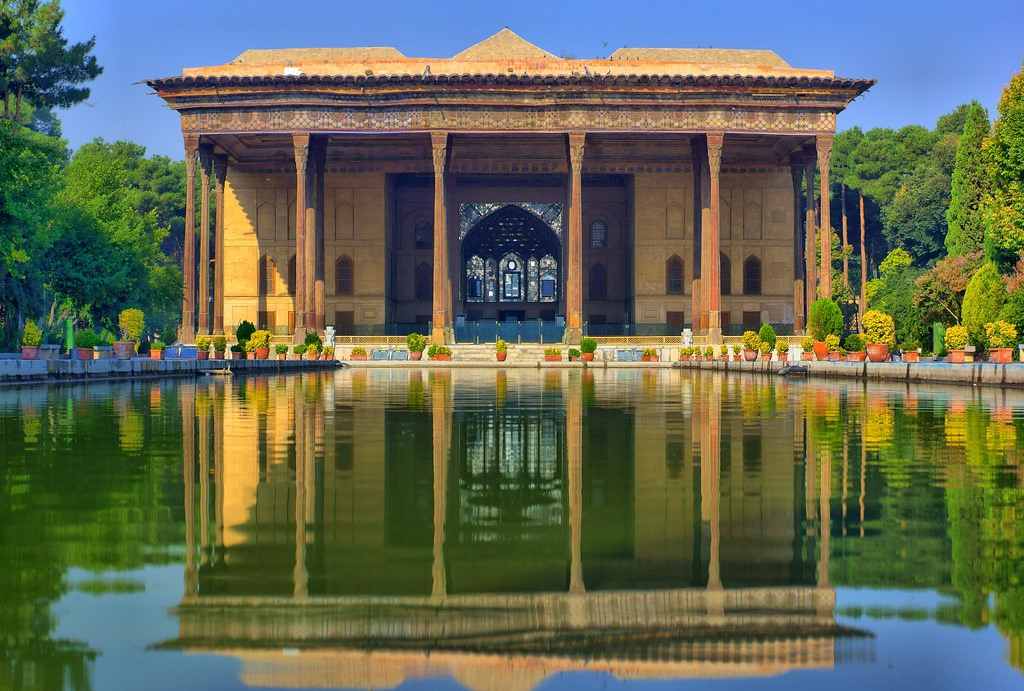
Monar Jonban
The Monar Jonban or Menar-e Jonban (Persian: meaning shaking minarets), is a monument located in Isfahan, in central Iran.
Construction began in the 14th century Safavid or Ilkhanate dynasties of Iran to cover the grave of Sufi Amu Abdollah Soqla.
Its notable feature is that if one of the minarets is shaken, the other minaret will shake as well.
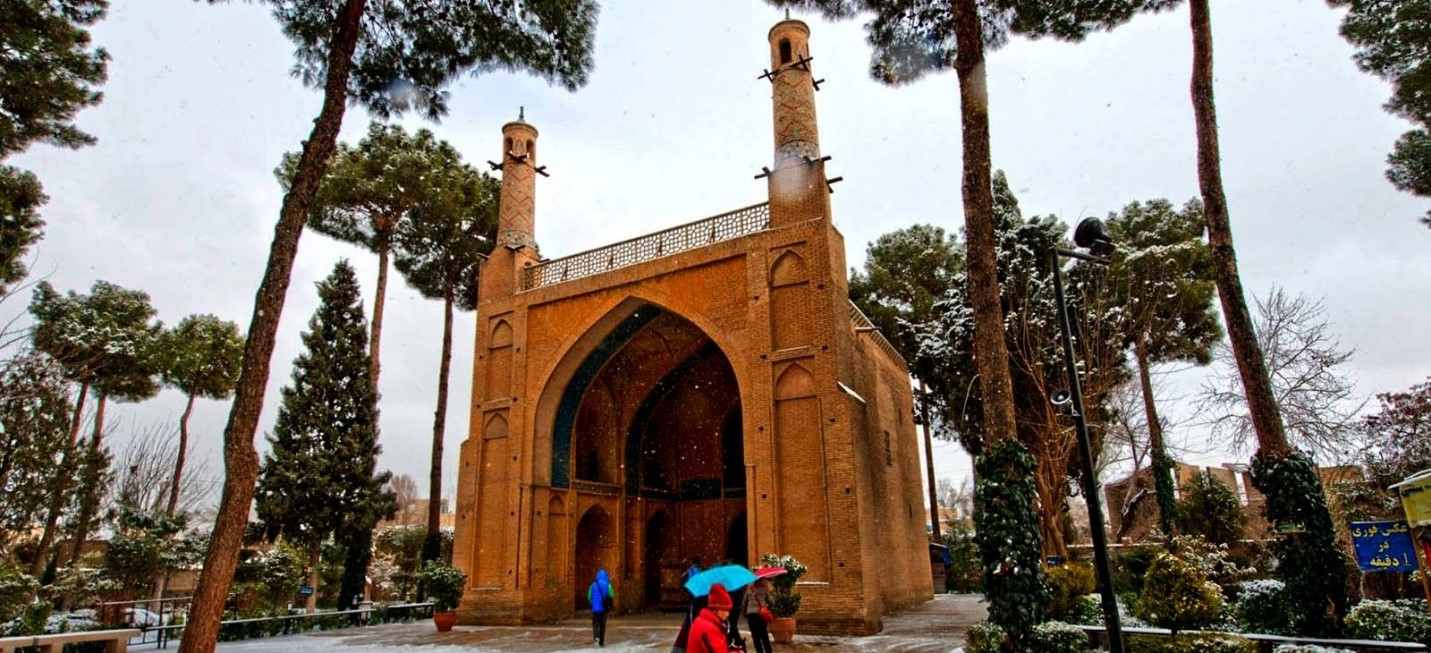
Allahverdi Khan Bridge
The Allahverdi Khan Bridge popularly known as Si-o-se-pol.
‘[the] bridge of thirty-three [spans]’), is the largest of the eleven historical bridges on the Zayanderud, the largest river of the Iranian Plateau, in Isfahan, Iran.
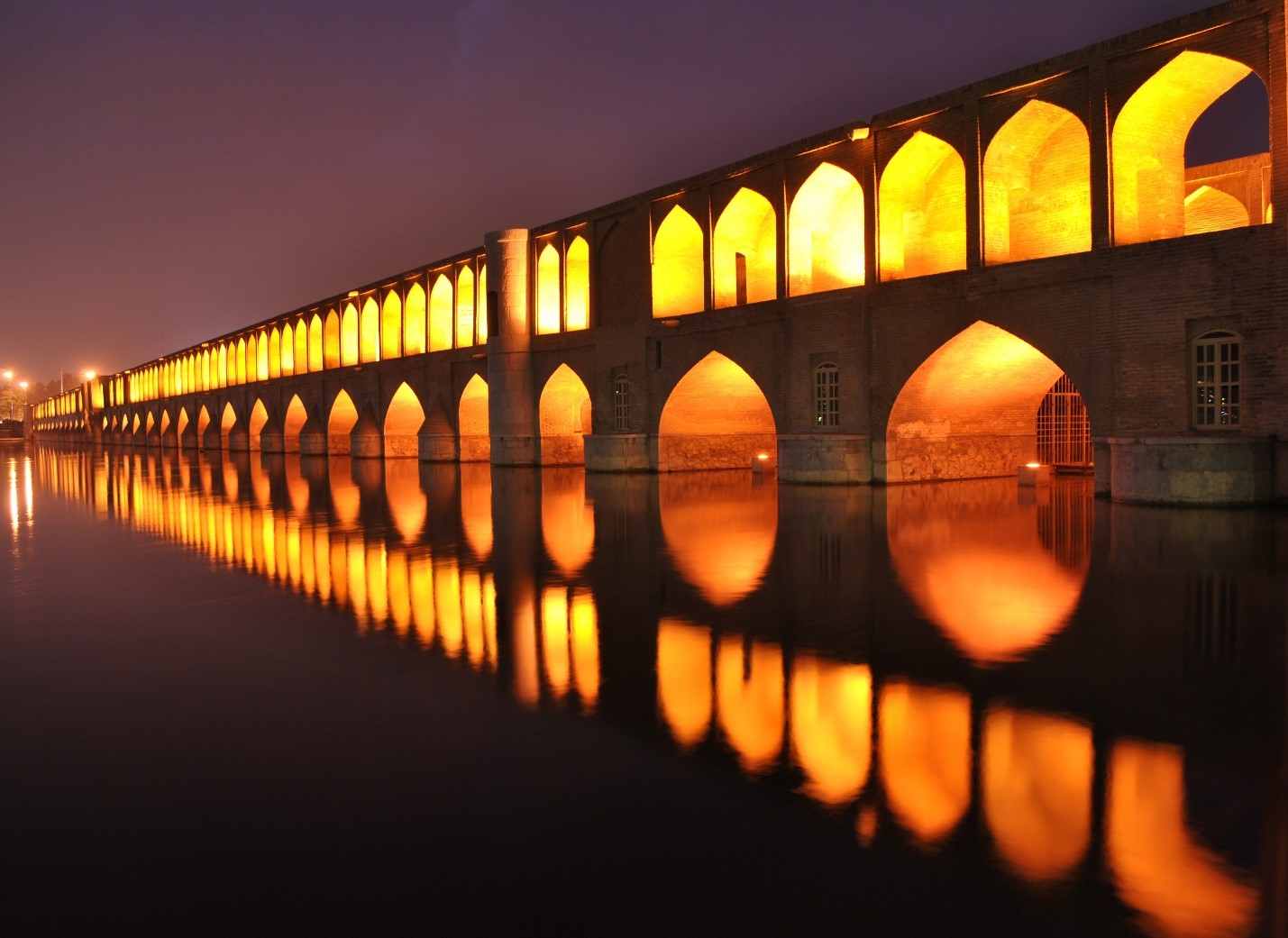
Khaju Bridge
The Khaju Bridge (Persian: Pol-e Xāju) is one of the historical bridges on the Zayanderud, the largest river of the Iranian Plateau, in Isfahan, Iran.
Serving as both a bridge and a weir, it links the Khaju quarter on the north bank with the Zoroastrian quarter across the Zayanderud.
It also served a primary function as a building and a place for public meetings.
It has been described as the city’s finest bridge.
Other places to visit while you are staying in Esfahan.
Flowers Garden, Birds Garden, Nazhvan_Forest_Park.
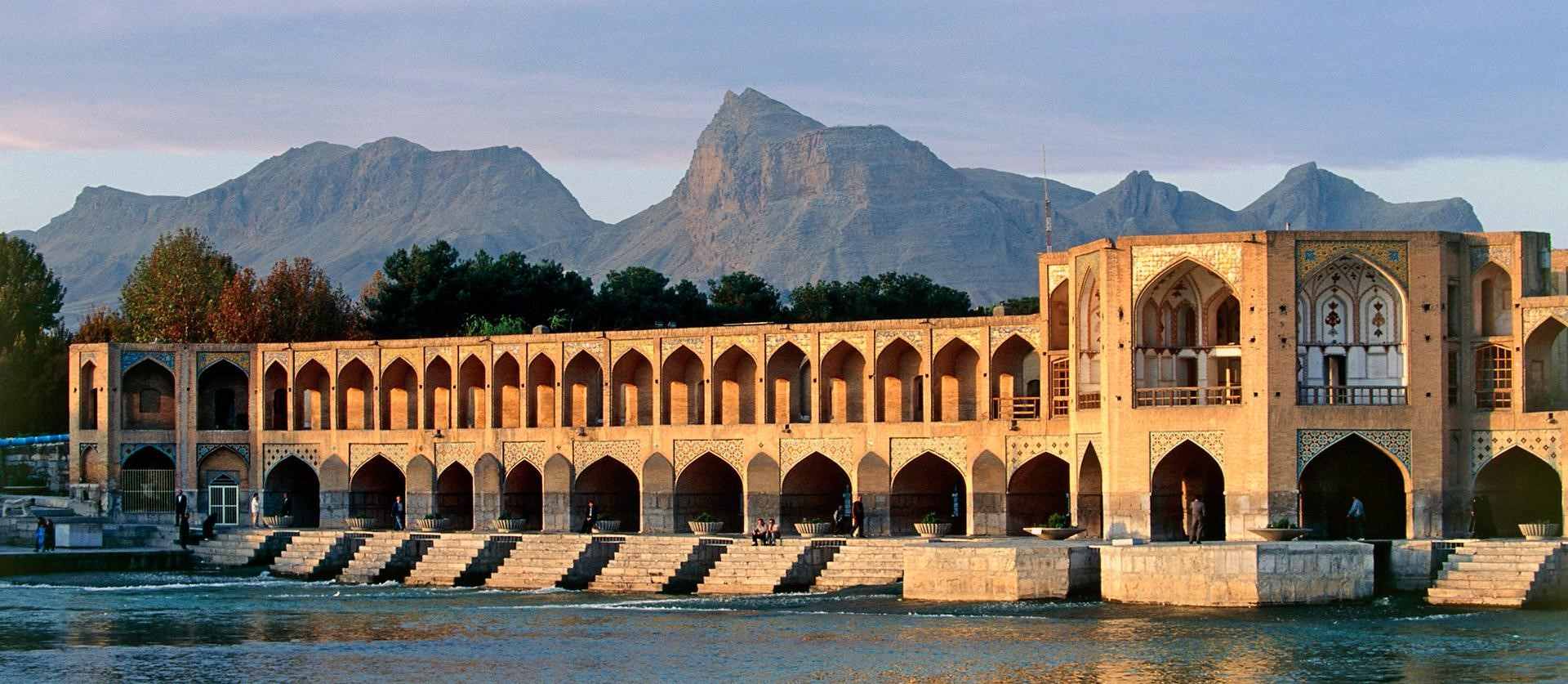
Handicraft from Isfahan
Carpets are one of the first artistic handicrafts which have been woven since ancient times in Persia .
Iranian Carpets have always been famous all over the world.
Almost all international tourists buy even a small Iranian carpet during their trips in Iran.
The oldest Persian carpet was found in Siberia , and dates back to 500 years B.C.
At the present time it is preserved under good conditions in Hermitage Museum in Russia (St.Peters Burg).
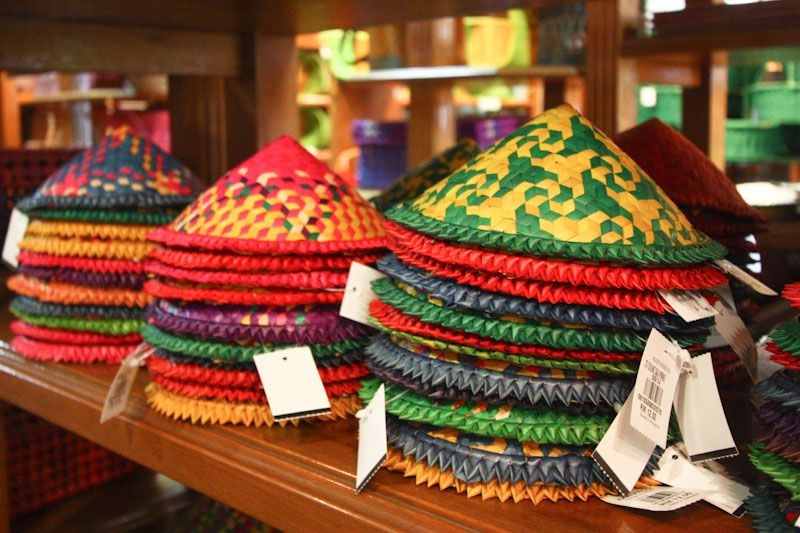
The Art of Enamel Work( Minakari)
The art of Minakari or Enamelling is called miniature of fire as well as the decoration of metal and tile with mina glaze.
Minakari or Enamelling is the art of painting, colouring and ornamenting the surface of metals by fusing over it brilliant colours that are decorated in an intricate design.
Mina is the feminine form of Minoo in Persian, meaning heaven.
Mina refers to the Azure colour of heaven.
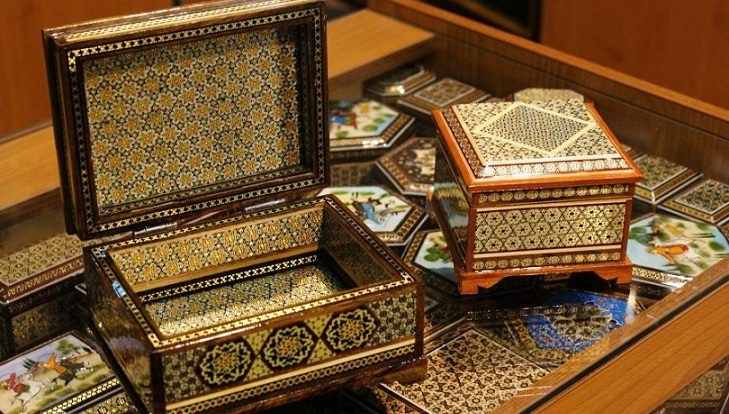
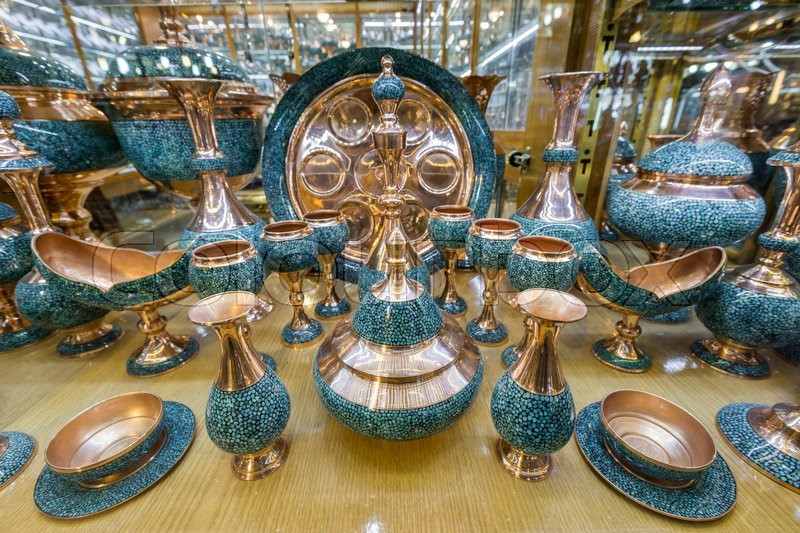
Inlaid Work (Khātam)
Khātam is a Persian version of marquetry, art forms made by decorating the surface of wooden articles with delicate pieces of wood, bone and metal precisely-cut geometrical shapes.
Khatam is also the capital of Khatam County in Iran.
Khatam kari (Persian): is the art of crafting a Khatam.
Common materials used in the construction of inlaid articles are gold, silver, brass, aluminum and twisted wire. Artworks with smaller inlaid pieces are generally more highly valued.
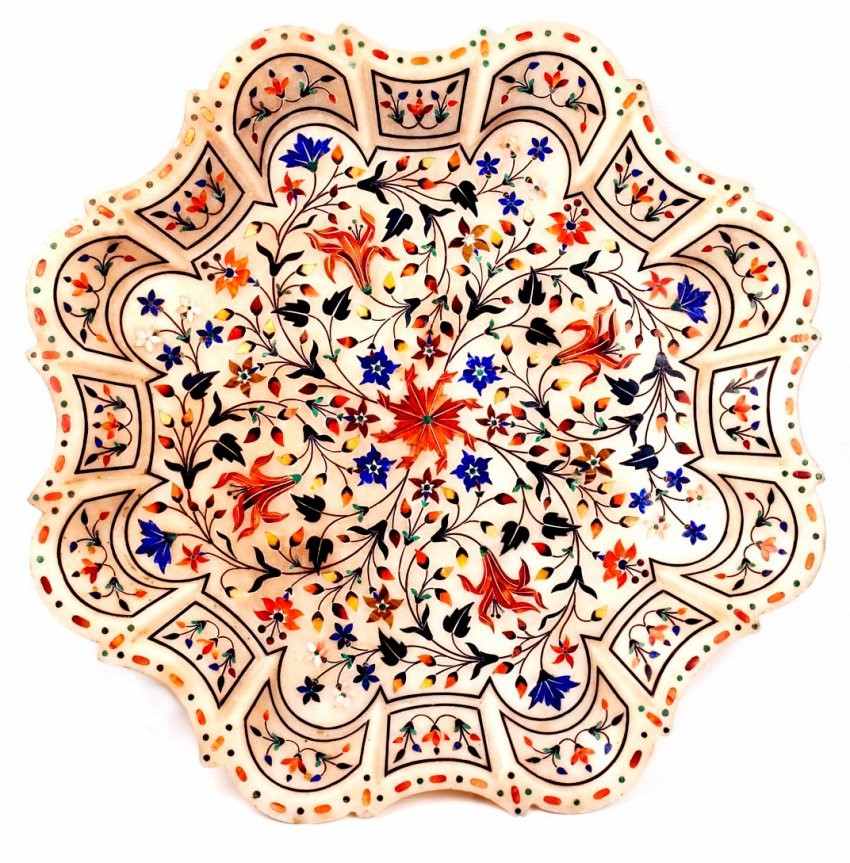
Engraving (Qalam-Zani)
It’s one of the traditional handicrafts of Iran that its origin goes back to the Sogians period that lived in Caucasus around 5000 to 7000 years ago and had Aryan origins.
Engraving is done on different metals such as copper,brass,silver, gold and also some alloys.
To engrave, first the back side of the work is covered by tar so as to prevent the work from causing a lot of noise, as well as getting punctured as a result of the hammering.
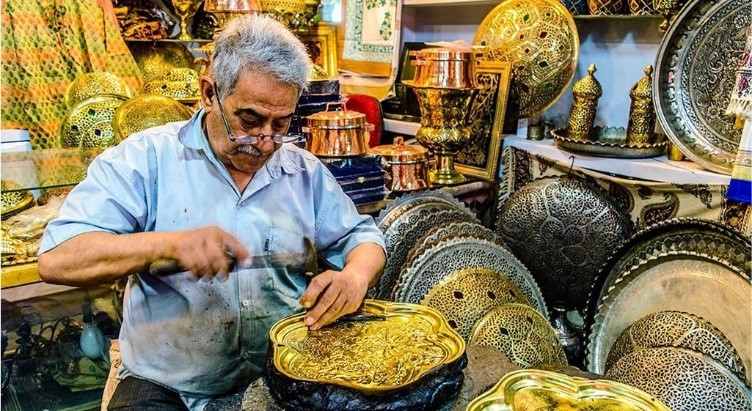
Isfahan Calligraphy
The Arabic script was adopted in Iran quite soon after the Islamic conquest of AD 642, largely because it was the official script of the new state into which Iran was incorporated.
Calligraphy is the highest art form of the Islamic civilization, and like all forms of art that came into contact with Iran, it was enhanced and developed by the Persians.
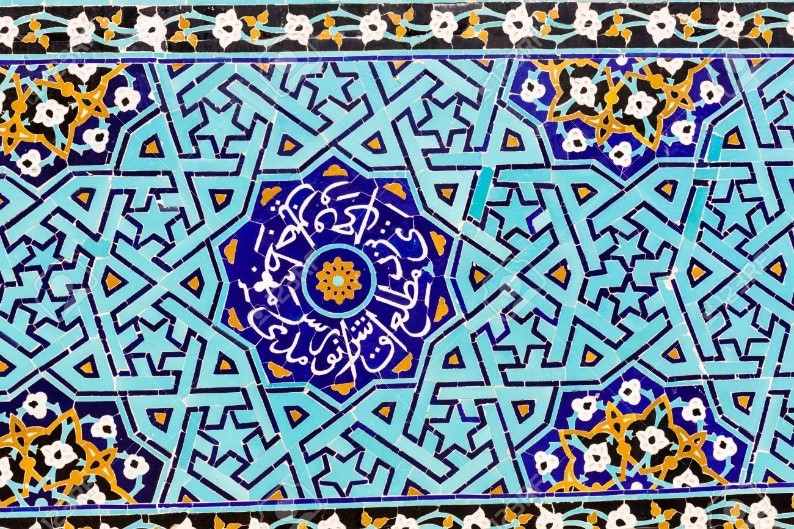
Tile Work
History of tiles (glass tile), manufacture and decoration in Iran, goes back to prehistoric times.
It has an important position among the various decorative arts in Iranian architecture.
Four main decorations were categorized here.
They are masonry work, brickwork, stucco and tiles.
The complicated method of manufacture, design and type of materials used in these four methods have evolved as a result of natural factors, economic and political implications.
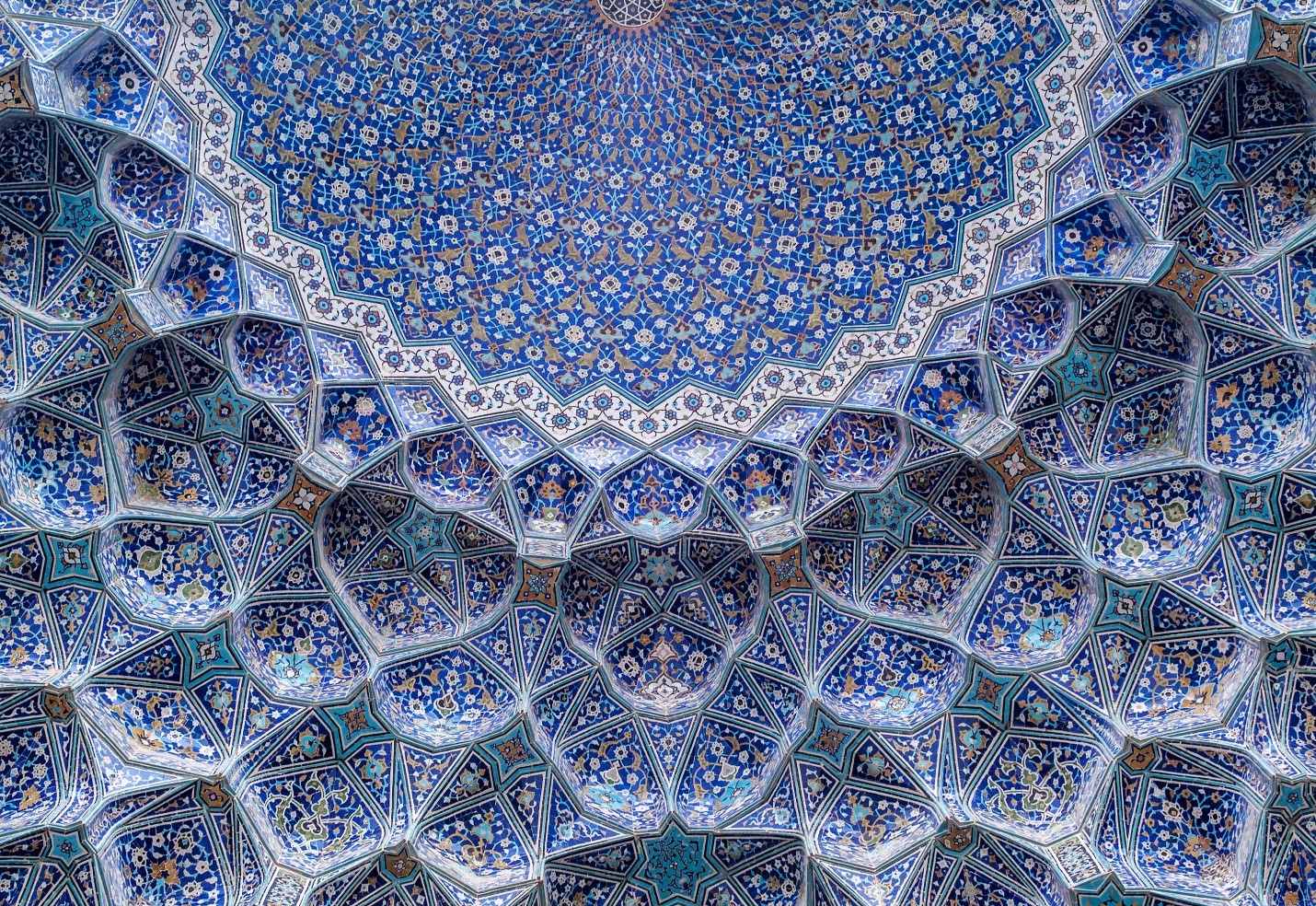
Isfahan miniature
Persian miniature is a richly detailed miniature painting representing religious or mythological themes from the Middle East, now known as Iran.
The art of miniature painting in Persia flourished from the 13th to the 16th century and continues to this day, with some contemporary artists producing remarkable Persian miniatures.
These delicate, lush paintings are typically visually stunning, with a detail level that can only be achieved with a very fine hand and an extremely small brush.
Traditional food of Isfahan:
If you are a food tourist and you are visiting Isfahan you must try Beryani, some of Esfahan famous Soup, and if you have sweet tooth, do not forget to try
Gaz, and polaki.
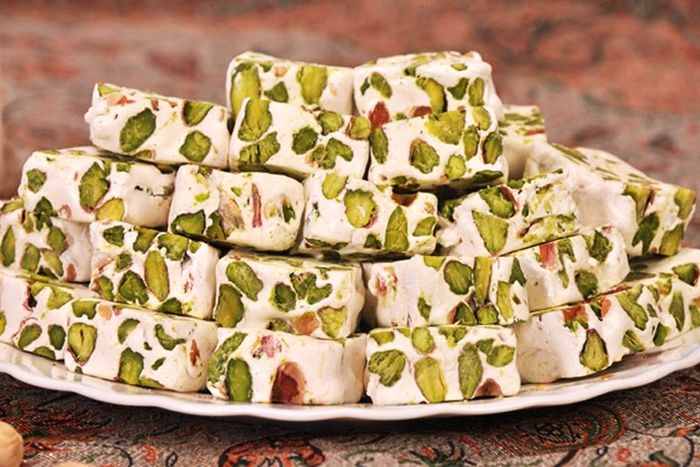
Shopping for souvenir
You will find some of the most preeminent Grand Bazaar, and also fabulous modern days shopping malls in Esfahan.
To name a few, you may want to visit City Center Mall, Arg e jahaan, Hakeem Shopping Center, Osaan, Nojan, and Martin for you souvenir purchases or simply hang around and meet the lovely people of Esfahan.
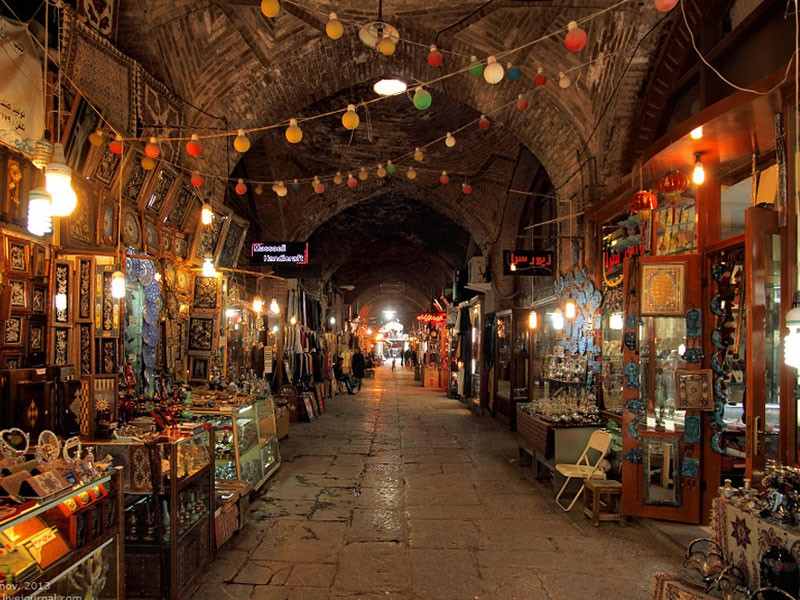
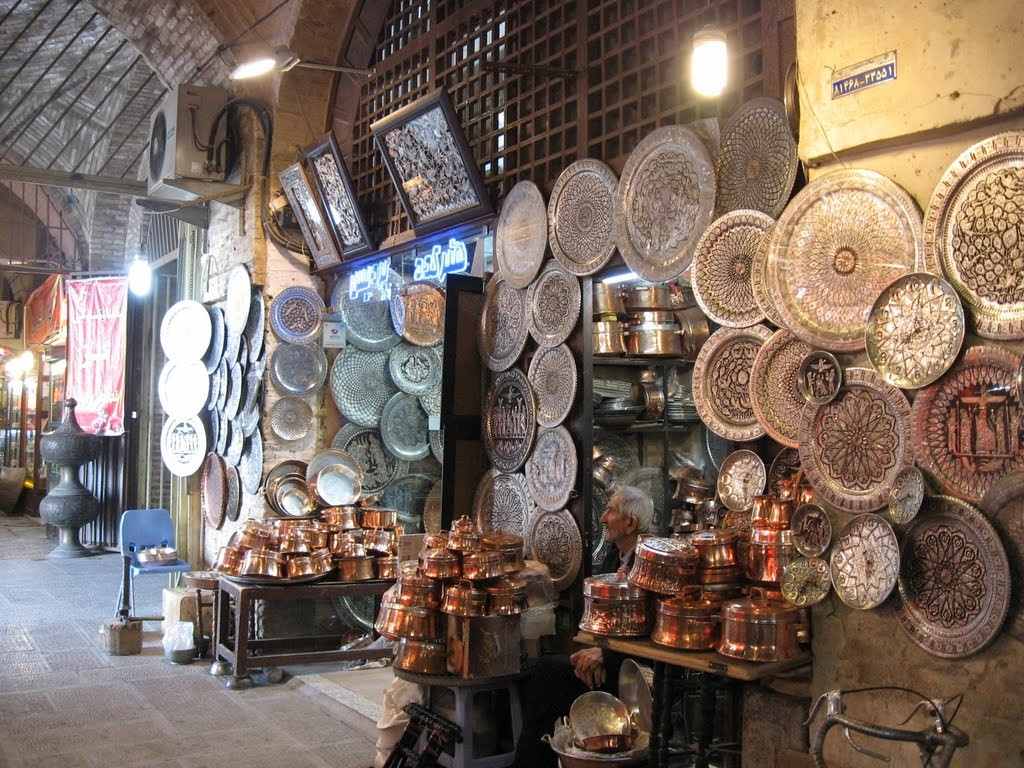
For vacationers in Iran, sepanja.com have got your Accommodations needs covered, could be a suite, apartment, House, or villa.
Please book your reservation in advance.
Vacation rentals in iran by sepanja.com

